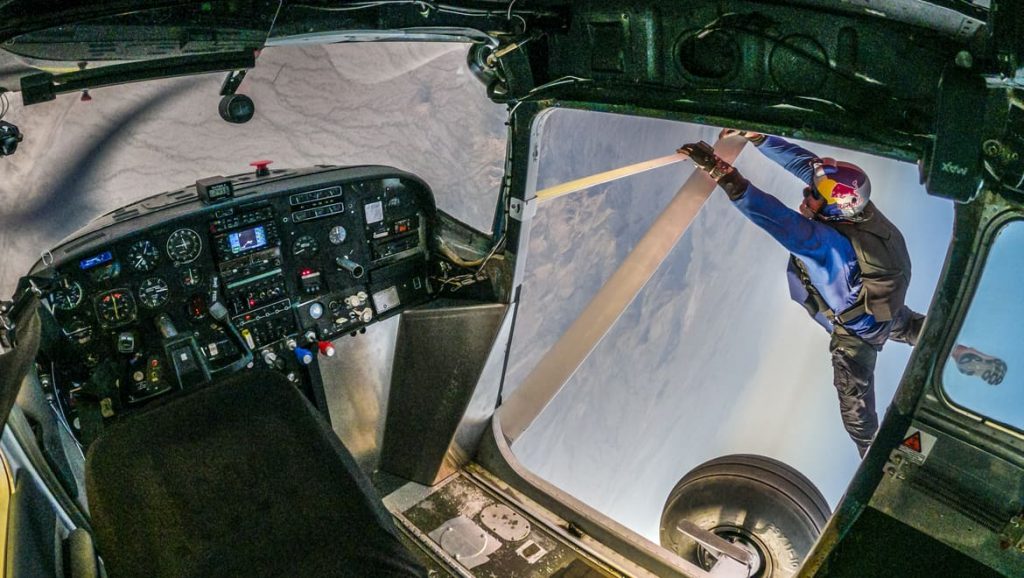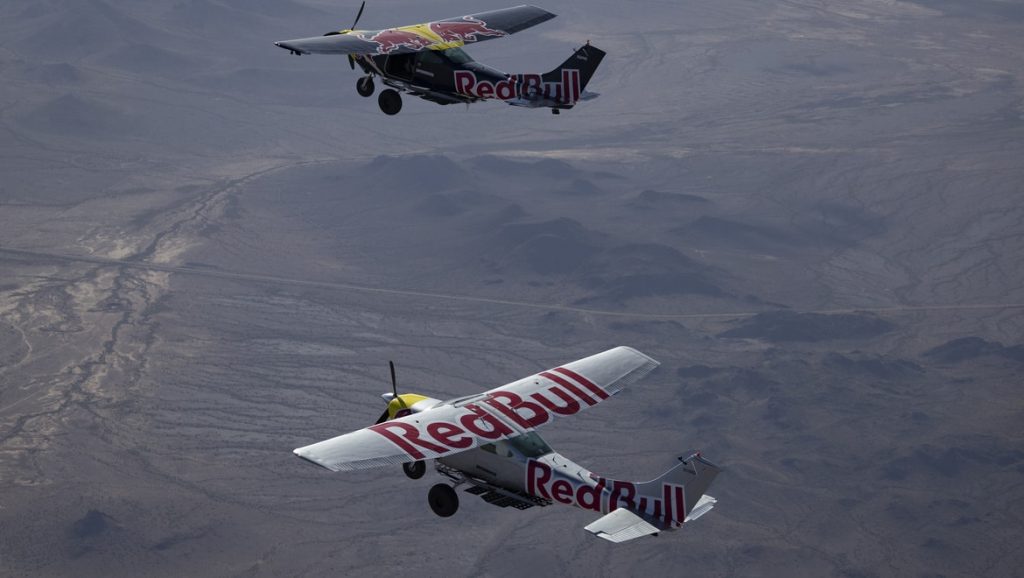
Austria-based Red Bull, a leading energy drink company, “partially accomplished” a stunt where two pilots attempted to switch cockpits mid-air as their aircraft nosedived into the ground.
Luke Aikins and Andy Farrington, both pilots and cousins attempted the stunt on Monday, and while Aikins was able to safely land his swapped Cessna 182 aircraft, Farrington was forced to parachute land as his aircraft crashed into the Arizona desert.
The Federal Aviation Administration (FAA) is now investigating the crash, according to a statement seen by The New York Times.
“Farrington’s aircraft’s safety mechanisms activated but the plane was damaged,” Red Bull said in a statement.
The stunt was set to become the first time pilots swapped aircraft unassisted, and Red Bull stated that the cousins spent 12 months preparing the single-engine aircraft for the experiment.
It was streamed live by its partner of the stunt Hulu, and no spectators were there to watch.

The pair are both experienced skydivers and pilots, according to Red Bull. Aikins entered the event with 21,000 jumps and 8,750 commercial flying hours, and Farrington had 27,000 jumps and 6,000 commercial flying hours in the bank.
According to the FAA, the agency denied a request for a safety exemption from Red Bull. In the request, Aikins justified the stunt because “during the swap, both aircraft will be unoccupied”.
In the agency’s response on 22 April signed by Robert C. Carty, the deputy executive director for flight standards service at the FAA, the exemption “would not be in the public interest”, and it could not “find that the proposed operation would not adversely affect safety”.
However, the two Cessnas took off one at a time to ascend to 14,000 feet (4,265 metres) before making the final decision whether it was safe to swap.
According to Red Bull, the aircraft were put into a tandem nosedive, and to stay that way, were equipped with a custom-built autopilot system to remain on trajectory. Each aircraft was also equipped with larger wheels and a speed brake to create more drag and give the pilots more time to swap.
The cousins exited their aircraft and began to skydive to approximately 2,000ft above ground level before getting into the other cockpit.
While the stunt was not completely successful, Aikins said it showed it was “possible”.
“We’re pushing boundaries out here and what’s great is I jumped from one, I got in the other one, we landed, I landed safely. Andy landed safely under a parachute. The plane landed under a parachute. All of our safety protocols worked,” Aikins said.
“That’s why we’re here where we are, everybody’s safe. The parachute system works just like it was supposed to … There’s no way to test it until you do it.”
Aikins has previously been in the media for performing the first skydive without a parachute on live TV in 2016, and developed the Red Bull Aces, the first wingsuit slalom competition in 2014.
Farrington said that despite having to make a parachute landing, “the important part” was that they both stayed safe.











